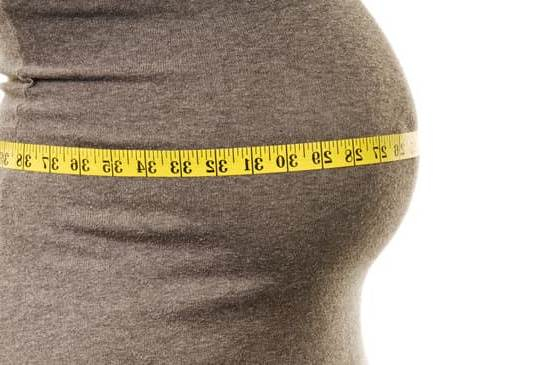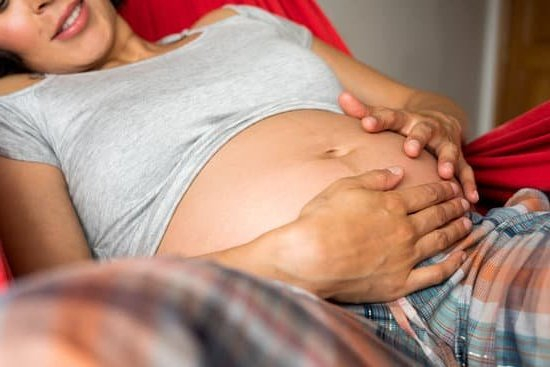Introduction
Fibroids are non-cancerous growths that can be found within the wall of the uterus. They often have a variable size and number; however, they can grow during pregnancy due to hormonal changes. Fibroids typically shrink after menopause. While not all a woman’s fibroids grow larger during pregnancy, when they do it can lead to discomfort and problems associated with labor, such as bleeding after birth or difficulty pushing.
During pregnancy, the increased levels of estrogen produced by the placenta cause fibroids to swell and grow significantly in some cases. Some studies have suggested that women with fibroids can expect them to increase by 50 percent or more during their pregnancy. It is also common for some women with more than one large fibroid to experience an uncomfortable full feeling in their lower abdomen. This sensation generally diminishes once the baby has been delivered. Symptoms of fibroids may worsen near term or late term in a pregnant woman because of the additional pressure exerted on the pelvic area from swelling uterine enlargement caused by pregnancy itselfl or due to extra strain on nearby organs and tissue as the growing baby moves around in utero.
Medical Causes of Fibroid Growth During Pregnancy
Fibroids are benign growths in the uterus that occur when tissue begins to grow abnormally and form a lump. Many women have fibroids without experiencing any symptoms, but for some, these growths can become problematic. Fibroids often grow during pregnancy, due to an increase in estrogen levels and higher blood flow to the uterus. Studies have shown that 20-25% of women with fibroids may experience a change in size or a new fibroid during pregnancy.
If fibroid growth occurs during pregnancy, there are several potential medical causes including hormonal imbalances, increased blood supply to the uterus from the placenta, and/or changes in gene expression within the affected tissue. Hormonal imbalances can arise due to changes in diet and lifestyle during pregnancy which affect hormone production and cause overgrowth of uterine tissues. An increase in blood supply can lead to larger size fibroids due to more nutrients being supplied which result in abnormal cellular growth or proliferation. Finally, alterations in gene expression within affected tissues play an important role as well by stimulating extra cell proliferation which gives rise to an enlarged mass.
In conclusion, while smaller fibroids may remain unchanged throughout a pregnancy, larger ones tend to grow due to various medical causes including hormonal imbalances, increased blood supply from the placenta, and/or alterations in gene expression within affected tissues. While further research is needed into this subject, understanding these tpotential causative factors will help doctors better diagnose and manage painful symptomatic fibroid growths experienced during pregnancy.
Common Symptoms of Fibroids Growing During Pregnancy
Yes, fibroids can grow during pregnancy. The highest chance of growth occurs in the first and second trimesters. Common symptoms of fibroids growing during pregnancy may include abdominal or pelvic discomfort, menstrual changes such as heavier bleeding, frequent urination and constipation, prolonged periods or spotting between periods, lower back pain or a feeling of heaviness within the abdomen. If you experience any of these symptoms while pregnant it is important to speak to your doctor as soon as possible. Fibroids may require medical attention in some cases if they are causing discomfort or potential harm to the mother or baby.
Risks Factors of Fibroid Growth During Pregnancy
Fibroids are noncancerous tumors that can grow in and around the uterus. Although these tumors are usually considered to be benign, they may cause symptoms such as pelvic pressure, heavy menstrual periods, and pain during sex. During pregnancy, fibroids can grow due to hormonal factors and uterine stretching. The risk factors for fibroid growth during pregnancy include:
– A family history of fibroids: People with a positive family history of the condition are more likely to experience fibroid growth during pregnancy.
– Age: Fibroid growth is more common among women between the ages of 30-45 years old.
– Obesity: Women who are obese are at greater risk for having fibroids that grow larger as the body prepares for childbirth.
– Nutrition: Eating an unhealthy diet high in sodium and low in fruits and vegetables can increase a woman’s risk for developing larger fibroids during pregnancy.
– Ethnicity: African American women have a higher incidence of developing uterine growths than other ethnicities.
Effective Treatment Options for Fibroids During Pregnancy
Fibroids are non-cancerous growths that can develop in the uterus during a woman’s lifetime. They are more likely to occur around the time of menopause and if someone is experiencing menopause. However, it is also possible for fibroids to grow during pregnancy as well. Symptoms of fibroids may include lower back pain, pelvic cramping and painful intercourse due to pressure from the fibroid on other organs such as the bladder or rectum.
There are effective treatment options for fibroids during pregnancy that typically involve medications and/or close monitoring of growth size. If the fibroid continues to grow at a rapid rate, surgery may be recommended depending upon its location. Medication (such as progesterone) can also help to reduce symptoms related to heavy bleeding, pain or pressure caused by the fibroid though this treatment should only be used if recommended by a doctor. Symptom relief is often the most important goal when treating fibroids in pregnant women.
Cases where women have complications due to fibroid growth while pregnant require surgery but risks need to be weighed with benefits when deciding on treatment option. Risks might include potential risks such as preterm labor, increased risk of Cesarean section delivery or passing on infection to baby after operation known as postnatal infection. Ultrasound evaluation of size and position can be used for close monitoring of each individual situation allowing medical team make correct decisions about best treatment plan for each person according their particular concerns & needs before making informed decisions regarding prenatal care & delivery type choices
Strategies for Preventing Fibroid Growth During Pregnancy
Fibroids can grow during pregnancy, however, there are certain strategies that may help prevent the size of fibroids from increasing. These strategies may include making sure to get adequate amounts of exercise while pregnant and eating a balanced diet which includes plenty of fresh fruits and vegetables. Additionally, avoiding certain types of foods in excess such as red meats, processed sugars and refined carbohydrates will help support a healthy uterus. It is also important to reduce or eliminate stress when possible. Avoiding both physical and emotional stressors can help maintain a healthy level of hormones and balance levels of estrogen and progesterone – two hormones closely linked with fibroid growth. Additionally, many women opt for natural remedies such as acupuncture or herbs to help reduce fibroid symptoms and/or size. If you’re pregnant, it’s best to consult with your health care provider before taking any supplements or trying new treatments.
Key Takeaways
Yes, it is true that fibroids may grow during pregnancy. This type of tissue growth can occur both inside the uterine wall or on the outer surface. Fibroids can cause complications with a pregnancy including intense abdominal pains, a larger than normal uterus size, difficulties conceiving as well as heavy bleeding during labor and delivery.
It’s important for those with existing fibroids to thoroughly discuss their condition with a qualified doctor before attempting to conceive, as the presence of these growths can significantly increase the likelihood of pregnancy complications such as preterm labor and miscarriage. Being knowledgeable about fibroid growth during pregnancy is key to decreasing any chances of adverse effects.
When considering whether fibroids will grow with pregnancy, there are a few factors that should be taken into consideration. The size of a woman’s existing fibroids will play an important role in determining how quickly or slowly they may grow. Additionally, if multiple fibroids are present, there could be further issues including an irregularly shaped uterus causing potential problems carrying out successful IVF treatments or even providing space for a growing baby in the womb in some scenarios. Alternatively, other women find that the hormonal changes caused by pregnancy shrink their preexisting fibroid tumors; this is often seen in younger women who have just begun to form tumors or have relatively small ones already present. Lastly, additional ultrasounds and tests will likely need to be performed routinely throughout someone’s pregnancy if one has been diagnosed with preexisting tumors in order to monitor both fetal and maternal health over time feasibly getting ahead of any abrupt changes prior to developing into advanced medical issues.

Welcome to my fertility blog. This is a space where I will be sharing my experiences as I navigate through the world of fertility treatments, as well as provide information and resources about fertility and pregnancy.





